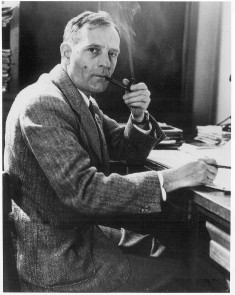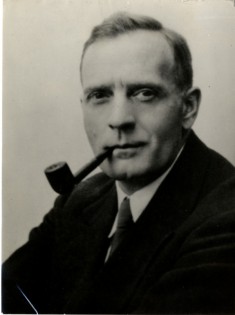| Edwin Hubble | |
|---|---|
 |
|
| Astronomer | |
| Specialty | Extragalactic astronomy |
| Born | Nov. 20, 1889 Marshfield, Missouri, U.S. |
| Died | Sep. 28, 1953 (at age 63) San Marino, California |
| Nationality | American |
Edwin Hubble is a world renowned astronomer who has made a significant contribution to the scientific understanding of the galaxies and the universe. His work was revolutionary in many ways, and remains the blueprint for a number of scientific laws, theories, and discoveries.
In recognition of his achievements and large contribution to the field of astrophysics, NASA’s Hubble Space Telescope was named after him, as well as many other monuments and landmarks, such as a planetarium, asteroid, and a number of university facilities.
Hubble’s Early Life
Edwin Hubble was born on November 20, 1889, in Marshfield, Missouri, in the United States. His parents were John Powell Hubble and Virginia Lee Hubble. As a child, Edwin had an avid interest for reading science fiction novels, with one of his favorites being 20,000 Leagues under the Sea by Jules Verne.
At the age of 10, Hubble and his family, which included his seven siblings, moved to Chicago, Illinois. While in high school, Hubble proved himself to be an excellent athlete, outperforming his peers in both track and field sports, and managing to break the Illinois state record for the high jump.
Secondary Education
Following high school, Hubble was awarded a scholarship in 1906 to attend the University of Chicago, where he studied mathematics and astronomy. During his university years, he served as a lab assistant under Robert Milikan, who was to win the Nobel Prize in Physics at a later stage.
Hubble graduated from Chicago University in 1910 and went on to Oxford University after obtaining a Rhodes Scholarship to study there. He studied law philosophy at Oxford, graduating three years later with a bachelor degree in jurisprudence. During this time, the death of Hubble’s father also occurred.
Career Highlights
Hubble started off teaching at a high school in Indiana, but only after a short time he decided to leave this job in pursuit of research aspirations. He went back to the University of Chicago to undertake further study in astronomy, where he completed a doctorate. He subsequently joined the US Army and served for one year during World War I.
Afterwards, he accepted an invitation to assist with finishing the construction of the Hooker telescope at Mount Wilson Observatory in California. This telescope was the biggest Newtonian telescope in the world at the time, having a mirror with a diameter of 2.5 m.
Contributions to Astronomy
 While in his position at Mount Wilson, Hubble was able to prove that there were other galaxies that existed beyond the Milky Way, which is the galaxy the Earth resides in. He did this by using the Hooker telescope at the observatory to capture photos of nebulae which he then compared. Hubble found that the distance between Andromeda Nebula and the Milky Way was so large that it had to be a galaxy on its own.
While in his position at Mount Wilson, Hubble was able to prove that there were other galaxies that existed beyond the Milky Way, which is the galaxy the Earth resides in. He did this by using the Hooker telescope at the observatory to capture photos of nebulae which he then compared. Hubble found that the distance between Andromeda Nebula and the Milky Way was so large that it had to be a galaxy on its own.
He also proved that many other nebulae were individual galaxies by measuring their distances from the Milky Way. By refuting the theory of a single galaxy, Hubble thus demonstrated that the universe was a lot bigger than previously thought. He also developed a classification system for different galaxies, which was used by scientists for decades after him.
In the mid 1920s, Hubble commenced new research with astronomer Milton Humason. Together, they looked at the spectral shifts and distances of the galaxies, especially in relation to the earth. The pair went on to publish their groundbreaking research in 1929, which put forward the thesis that redshifts associated with the galaxies increased with distance, a concept that indicated the universe is expanding. This later came to be known as Hubble’s Law. The research of Hubble and Humason contributed to evidence that the origin of the universe was derived from a central point, and was later used to by some scientists to substantiate the Big Bang Theory.
Hubble’s Later Work
In 1935, Hubble made the discovery of an asteroid that was named 1373 Cincinnatti. Later In 1936, he published a compilation of his research on extragalatical astronomy, called The Realm of the Nebulae, which provided a history and explanation of his work and discoveries. In 1942, Hubble left his work at the Observatory to serve in the army during World War II at the Aberdeen Proving Grounds in Maryland, for which he was given the Medal of Merit in 1946.
Death
Hubble continued to work as a researcher at the Mount Wilson Observatory and the Palomar Observatory in California until his death on September 28, 1953. He died from a stroke at the age of 63.